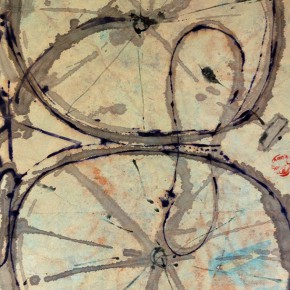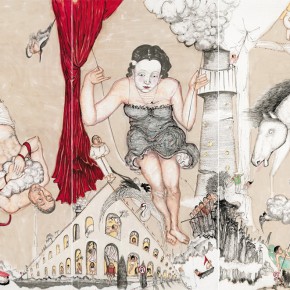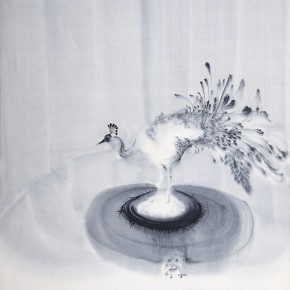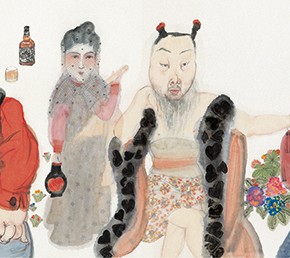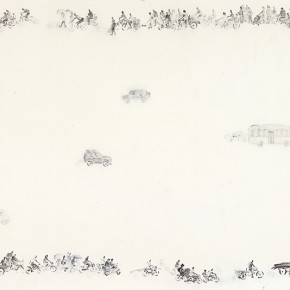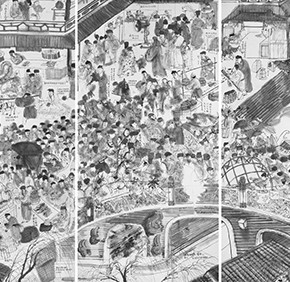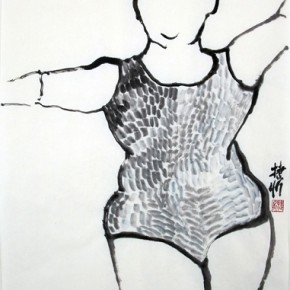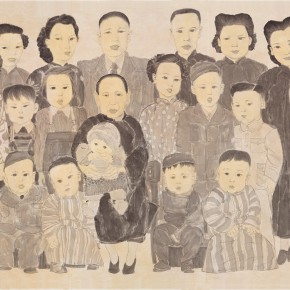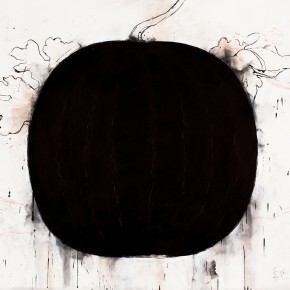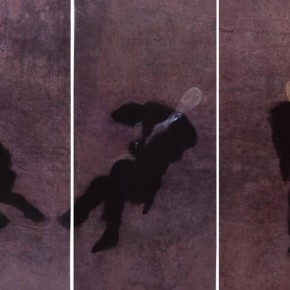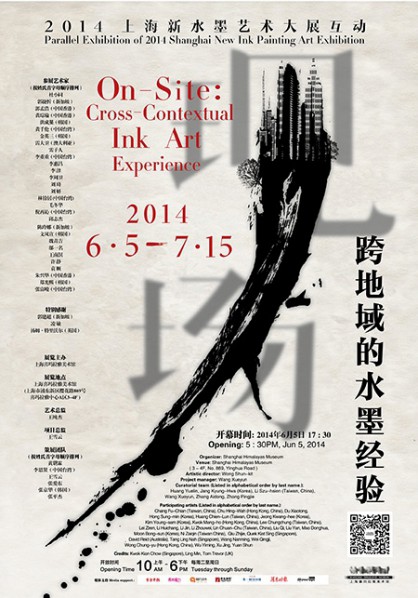
When ink art endeavours to interact more with the ordinary and the public rather than to distance itself from all that, when it manages to detach itself from the imagination of “traditional inheritance” and intrude upon the contemporary and the “site”, this should be considered as a betrayal or a breakthrough of ink art in the contemporary context?
Looking back upon the exhibitions and events that Shanghai Himalayas Museum has presented during the past few years, there has been a continuous effort to probe into the possibilities of how contemporary ink art could be perceived: Chinese Ink Painting: Change and Growth Series (2009-2012) focused on case studies of individual artists; A New Spirit in Ink – An Exhibition of Cutting-Edge Ink Art (2012) cast light on the possibilities of ink art in a three-dimensional context; and A Fragment in the Course of Time – Landscape of Chinese Ink Art in the 1980s (2014) paid attention to a period of history that was often neglected. As the latest attempt made by the museum, On-Site: Cross-Contextual Ink Art Experience looks forward to furthering the interaction between ink art and contemporary life.
As a parallel exhibition of 2014 Shanghai New Ink Painting Art Exhibition, On-Site: Cross-Contextual Ink Art Experience has chosen to focus on “ink art and the contemporary”, an area that has so far not been fully explored. Over 180 pieces of ink artworks by more than 30 artists from mainland China, Hong Kong (China), Taiwan (China), Singapore and Korea will be put on display, featuring ordinary life and people. Under the backdrop of the hype around contemporary ink art, the appeal to confront everyday activities and to intrude upon contemporary society has a value of its own. Divided into four sections, namely Site: People, Site: Life, Site: Environment and Site: History, the exhibition intends to present a landscape of ink art that is different from before.
Resorting to a kind of sensitive and subtle brushwork, Li Huichang manages to delineate a mixed status of confrontation, rebellion and absurdity through a tone of light grey. Li Zhouwei, on the other hand, chooses to make use of overwhelming blankness to highlight the minutiae of the existence of human beings. The two pieces together with other works collectively compose Site: People. Li Jin’s works are the highlight of Site: Life as he directly probes into the true color of life in a kind of artistically humorous way. Wang Nanming’s rubbing of the dried riverbed of Xiliu Lake is a typical example of Site: Environment. Mao Donghua’s exploration of ink painting which features an integration of traditional brushwork and modern composition as well as a reflection upon the past and the present. In the Site: History she creates, the past can be touched and the future can be envisaged. Qiu Zhijie’s First Time to See Lantern Lights endeavours to imbue a sense of modernity into an historic composition, connecting a site of history with the context of contemporary
As the social and cultural contexts within which traditional ink art was rooted have almost disappeared, perception of so-called “traditional ink art” has to change. What will happen when ink art intrudes more upon contemporary life and contemporary people? Bearing this question in mind, the Himalayas Museum chooses to feature “ink art” as one of the keywords for its ninth anniversary. Hopefully, On-Site: Cross-Contextual Ink Art Experience will play the role as a rule breaker of ink art in a contemporary context. The exhibition will run through to July 15.
About the exhibition
Title: On-Site: Cross-Contextual Ink Art Experience - Parallel Exhibition to the 2014 Shanghai New Ink Painting Art Exhibition
Organizer: Shanghai Himalayas Museum
Dates: June 5 – July 15, 2014
Venue: Shanghai Himalayas Museum (3-4F, No. 869, Yinghua Road)
Participating artists (Listed in alphabetical order by surname.):
Chang Fu-Chian (Taiwan, China), Chu Hing-Wah (Hong Kong, China), Du Xiaotong, Hong Sung-min (Korea), Huang Chien-Lun (Taiwan, China), Jeong Kwang-hee (Korea), Kim Young-sam (Korea), Kwok Mang-ho (Hong Kong, China), Lee Chungchung (Taiwan, China), Lei Ziren, Li Huichang, Li Jin, Li Zhouwei, Lin Chuan-Chu (Taiwan, China), Liu Qi, Liu Yan, Mao Donghua, Moon Bong-sun (Korea), Ni Zaiqin (Taiwan China), Qin Feng, Qiu Zhijie, Quek Kiat Sing (Singapore), David Reid (Australia), Tang Ling Nah (Singapore), Wang Nanming, Wei Qingji, William Kentridge (South Africa), Wong Chung-yu (Hong Kong, China), Wu Yiming, Xu Jing, Yuan Shun
Artistic director: Wong Shun-kit
Project director: Wang Xueyun
Curatorial team (Listed in alphabetical order by surname.):
Huang Yuelin, Jang Kyung-Hwa (Korea), Li Szu-hsien (Taiwan, China), Wang Xueyun, Zhang Aidong, Zhang Pingjie
Credits: Kwok Kian Chow (Singapore), Ling Min, Tom Trevor (UK), Lorenz Helbling (Switzerland)
Courtesy of the artists and Shanghai Himalayas Museum, for further information please visit www.himalayasart.cn.


